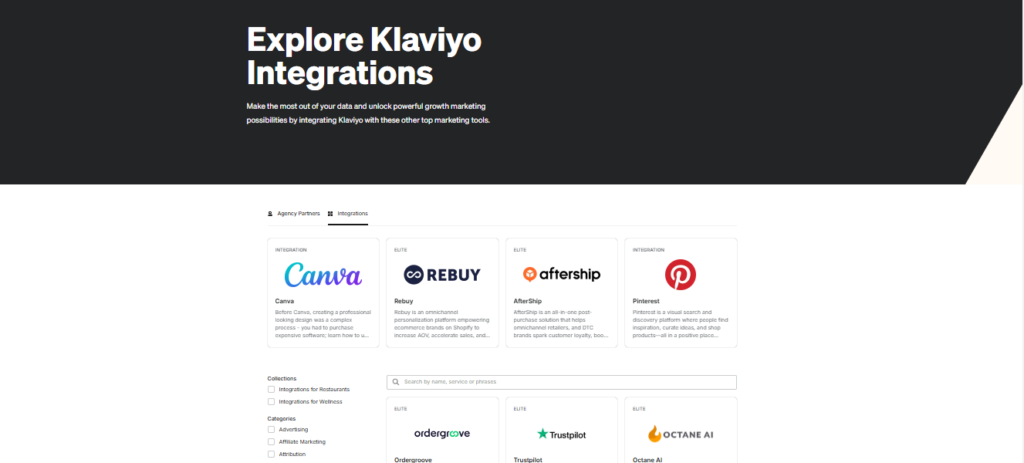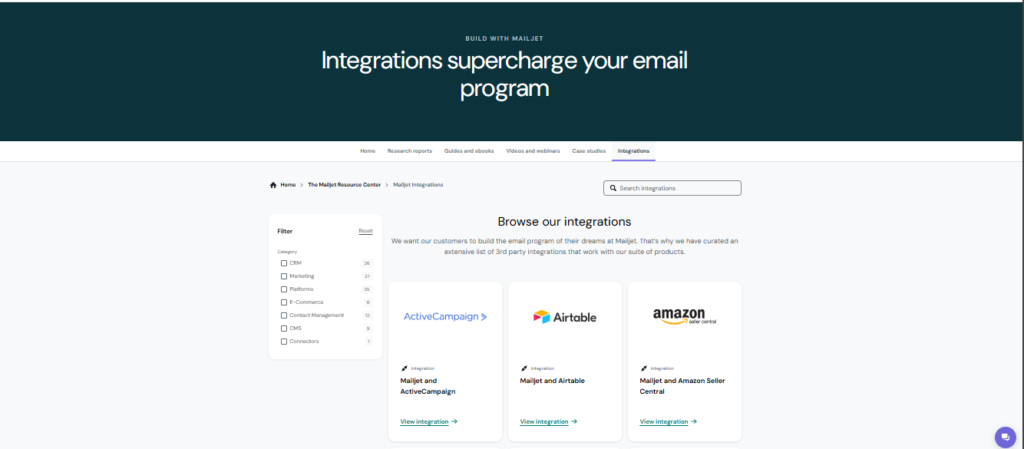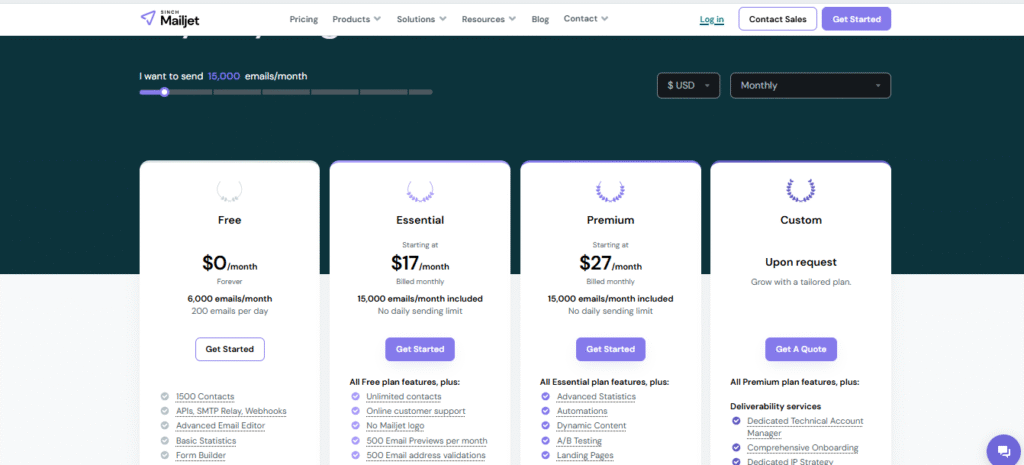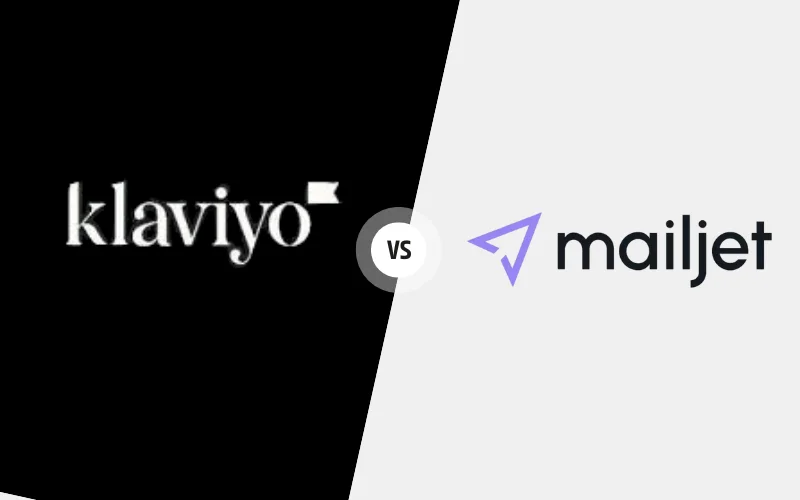Introduction Klaviyo vs Mailjet
If choosing an email marketing platform is on your to-do list, the decision often comes down to features, ease of use, and pricing. In this detailed comparison of Klaviyo vs Mailjet, we’ll break down the key differences to help you find the best fit for your business. Whether you’re running an ecommerce store or managing general marketing campaigns, understanding how these two platforms stack up will make your choice easier and smarter.
Ease of Use
When comparing Klaviyo vs Mailjet in terms of ease of use, both platforms offer a user-friendly experience, but they cater to slightly different audiences.
Klaviyo is designed with ecommerce businesses in mind. Its interface is clean and powerful, but it can feel a bit overwhelming for beginners due to the number of advanced features available. Setting up your first campaign is straightforward with Klaviyo’s guided setup, but users who are new to email marketing might need a little time to get familiar with its automation and segmentation tools.
On the other hand, Mailjet focuses on simplicity. Its drag-and-drop email editor is intuitive and easy to navigate, even for someone with no prior experience. Creating and sending basic campaigns is quick and stress-free. Mailjet also offers collaboration tools, making it a good choice for teams that need to work together on emails.
In short, if you want powerful features and are willing to spend a bit of time learning, Klaviyo is a strong choice. If you prefer a more beginner-friendly and straightforward experience, Mailjet might be the better option.
Email Templates and Design Tools
When looking at Klaviyo vs Mailjet for email templates and design tools, both platforms offer strong features, but they approach design slightly differently.
Klaviyo provides a large selection of modern, ecommerce-focused email templates. These templates are designed to help businesses quickly create high-converting emails. Klaviyo’s drag-and-drop editor is flexible, allowing users to easily customize layouts, add dynamic content, and personalize emails based on customer behavior. It also offers an option to build emails from scratch using custom HTML for more advanced users.

Mailjet, meanwhile, also offers a good variety of professional templates. Its email editor, known as “Passport,” is very intuitive and collaboration-friendly, meaning multiple team members can work on a design at the same time. Mailjet’s templates are well-suited for general marketing campaigns, newsletters, and transactional emails. While it may not offer as many ecommerce-specific options as Klaviyo, it shines in simplicity and speed.

In summary, if you need highly customizable, dynamic email templates for ecommerce, Klaviyo has an advantage. If you want quick, team-friendly designs for newsletters and basic campaigns, Mailjet is a great choice.
Automation Capabilities
When comparing Klaviyo vs Mailjet on automation capabilities, Klaviyo stands out for its advanced and highly customizable options, while Mailjet focuses on simplicity and essential features.
Klaviyo is known for its powerful automation workflows, especially for ecommerce brands. It allows users to set up detailed flows based on customer behavior, such as cart abandonment, post-purchase follow-ups, and personalized product recommendations. The visual flow builder is intuitive and lets you create complex, multi-step automations without needing technical skills. Klaviyo also offers a wide range of pre-built automation templates to make setup faster.

Mailjet offers basic automation features like welcome emails, anniversary emails, and abandoned cart reminders. Its automation builder is easy to use but more limited compared to Klaviyo. Mailjet is ideal for businesses that need simple, straightforward automation without too many customization options.

In short, if you are looking for deep, behavior-driven automation to boost ecommerce sales, Klaviyo is the stronger choice. For simpler automation needs, Mailjet covers the basics well.
Deliverability Rates
When it comes to Klaviyo vs Mailjet in terms of deliverability rates, both platforms perform well, but there are a few key differences to note.
Klaviyo places a strong emphasis on deliverability, especially for ecommerce brands that rely on timely and personalized emails. It provides tools like dedicated sending domains, automated list cleaning, and predictive analytics to help users maintain high deliverability rates. Klaviyo also offers clear guidance on how to set up authentication protocols like SPF, DKIM, and DMARC to improve inbox placement.
Mailjet also has a good reputation for email deliverability. It offers features such as dedicated IP addresses (for higher volume senders), deliverability monitoring, and email authentication support. However, since Mailjet is used by a wide variety of businesses, deliverability can sometimes vary based on how strictly users follow best practices.
Overall, Klaviyo tends to have a slight edge for businesses that need consistently high deliverability, especially for ecommerce marketing. Mailjet is a solid choice for general campaigns but may require more careful monitoring to achieve the best results.
Integration Options
Looking at Klaviyo vs Mailjet for integration options, both platforms support a wide range of tools, but they focus on different strengths.
Klaviyo is built specifically for ecommerce businesses, so it offers deep integrations with popular ecommerce platforms like Shopify, WooCommerce, BigCommerce, and Magento. It also connects seamlessly with Facebook Ads, Google Ads, and various CRM tools. Klaviyo’s integrations are designed to pull in customer data automatically, helping businesses create highly targeted campaigns based on real-time behaviors.

Mailjet, on the other hand, offers a broader range of integrations across different industries. It connects with CRM systems, CMS platforms like WordPress, ecommerce platforms, and even collaboration tools like Slack. Mailjet also provides a robust API for custom integrations, making it flexible for businesses with specific technical needs.

In short, if your main focus is ecommerce, Klaviyo offers deeper and more specialized integrations. If you need a flexible email solution that works across a wide range of tools, Mailjet is a strong option.
Analytics and Reporting
When comparing Klaviyo vs Mailjet in analytics and reporting, Klaviyo offers a more advanced and detailed approach, while Mailjet focuses on simplicity and ease of use.
Klaviyo provides deep analytics that are especially valuable for ecommerce businesses. Users can track key metrics like open rates, click rates, revenue per email, and customer lifetime value. Klaviyo’s reporting tools also allow you to build custom reports and segment performance by campaign, automation flow, or customer group. The platform even integrates predictive analytics to help forecast customer behavior and optimize marketing strategies.
Mailjet delivers more basic reporting tools that cover the essentials. You can easily track opens, clicks, bounces, and unsubscribes. Mailjet’s real-time analytics dashboard makes it easy to see how your campaigns are performing at a glance. While it may not offer the deep insights or ecommerce-specific metrics that Klaviyo does, it’s more than enough for businesses that need straightforward performance tracking.
Overall, if you need detailed, ecommerce-driven reporting, Klaviyo has the clear advantage. If you prefer simple and quick insights, Mailjet offers an easy-to-understand solution.
Pricing Klaviyo Comparison
When evaluating Klaviyo vs Mailjet on pricing, it’s important to consider your business needs and budget, as the two platforms have very different pricing models.
Klaviyo offers a free plan for up to 250 contacts and 500 email sends per month. After that, pricing scales based on the number of contacts you have. For example, for 1,000 contacts, Klaviyo charges around $45 per month. The platform’s pricing includes full access to all features — automation, reporting, integrations — without needing to pay extra for different tiers. However, Klaviyo can become expensive as your contact list grows, making it best suited for businesses that can take full advantage of its ecommerce tools.

Mailjet provides a more flexible pricing structure. It has a free plan that includes 6,000 emails per month (with a daily limit of 200 emails). Paid plans start at around $15 per month for 15,000 emails, regardless of the number of contacts. Higher tiers offer features like advanced segmentation, A/B testing, and priority support. Mailjet’s pricing is generally more affordable, especially for businesses that send a large volume of emails but have smaller budgets.

In summary, Klaviyo offers more powerful features but at a higher price, while Mailjet is a more budget-friendly option for basic email marketing needs.
Customer Support
When comparing Klaviyo vs Mailjet in terms of customer support, both platforms provide helpful resources, but their support options differ in availability and depth.
Klaviyo offers strong customer support through multiple channels. Users on the free plan have access to email support and community forums. Paid users can access live chat support during business hours. Klaviyo also has an extensive knowledge base, video tutorials, and live training webinars, making it easier to learn the platform and troubleshoot issues independently. However, some users have mentioned that response times can vary during peak hours.
Mailjet provides email support for all users, including those on the free plan. Live chat support is available, but only for users on the Premium and Enterprise plans. Mailjet also offers a helpful knowledge base, API documentation, and guides for beginners. Overall, Mailjet’s support is reliable, but smaller businesses on lower-tier plans might experience slower responses compared to higher-paying customers.
In short, if access to quick live chat support is important and you’re willing to pay for it, Klaviyo may be a better fit. Mailjet offers solid support as well but prioritizes faster service for its premium users.
Pros and Cons
When deciding between Klaviyo vs Mailjet, it helps to look at the key advantages and disadvantages of each platform to find the best fit for your needs.
Klaviyo Pros:
- Powerful ecommerce-focused automation and segmentation
- Deep integrations with popular ecommerce platforms
- Advanced analytics and revenue tracking
- Highly customizable email templates
- Strong support resources including live chat for paid users
Klaviyo Cons:
- Can be expensive as your contact list grows
- Slight learning curve for beginners due to advanced features
- Support response times can vary during busy periods
Mailjet Pros:
- Affordable pricing with generous free plan
- Easy-to-use drag-and-drop editor suitable for beginners
- Collaborative email design tools for teams
- Flexible API and wide range of integrations
- Reliable basic automation and deliverability
Mailjet Cons:
- Less advanced automation compared to Klaviyo
- Limited ecommerce-specific features
- Live chat support only available on higher-tier plans
- Reporting tools are more basic and less detailed
Final Verdict: Klaviyo vs Mailjet
Choosing between Klaviyo vs Mailjet ultimately depends on your business needs and budget. If you run an ecommerce store and want advanced automation, deep integrations, and detailed analytics, Klaviyo is the more powerful option—though it comes at a higher price and requires some time to learn.
On the other hand, Mailjet is an excellent choice for businesses seeking an affordable, easy-to-use platform with solid basic features, especially if you value team collaboration and simple email campaigns.
Both platforms offer reliable deliverability and essential email marketing tools, so consider your priorities carefully. For ecommerce-focused businesses ready to invest in growth, Klaviyo is likely the better fit. For smaller teams or those on a tighter budget, Mailjet provides a great balance of features and ease.


![Read more about the article How to Start Affiliate Marketing as a Complete Beginner [2025 Guide]](https://prograte.tech/wp-content/uploads/2025/05/How-to-Start-Affiliate-Marketing-as-a-Complete-Beginner-2025-Guide-300x188.webp)

